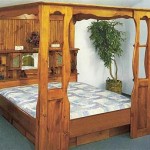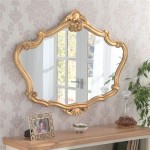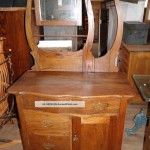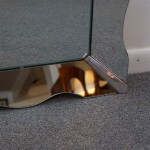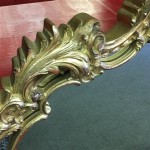Sliding Mirror Wardrobe Door Track: A Comprehensive Guide
Sliding wardrobe doors offer a sleek, space-saving solution for modern homes. Integral to their smooth operation is the sliding mirror wardrobe door track. This often-overlooked component plays a crucial role in the longevity and performance of the wardrobe, impacting daily usage. Understanding the various types, materials, and installation considerations can significantly enhance the user experience and prevent potential issues down the line.
Types of Sliding Mirror Wardrobe Door Tracks
Several types of sliding wardrobe door tracks exist, each catering to specific needs and door configurations. The most common types include top-hung, bottom-rolling, and bottom-guided systems. Top-hung systems suspend the doors from the top track, placing minimal weight on the bottom track. This setup allows for smoother operation and reduces wear and tear on the bottom track. Bottom-rolling systems rely on rollers attached to the bottom of the doors, running along the bottom track. While generally more affordable, this design can be more susceptible to debris accumulation, potentially hindering smooth gliding. Bottom-guided systems combine elements of both, using the bottom track for stability and guidance, while the top track primarily supports the weight of the doors. This hybrid approach offers a balance of smooth movement and stability.
The choice of track system will depend on factors such as the weight and size of the doors, available space, and budget. Heavier doors, such as those made with thicker glass or solid wood, may benefit from the robust support of a top-hung system. Smaller, lighter doors can often function effectively with a simpler bottom-rolling system.
Materials and Durability
Sliding mirror wardrobe door tracks are typically constructed from aluminum, steel, or plastic. Aluminum offers a lightweight yet strong option, resistant to corrosion and suitable for most standard wardrobe doors. Steel provides greater load-bearing capacity, making it ideal for heavier doors or frequent usage. However, steel is more susceptible to rust if not properly treated or maintained. Plastic tracks are a more budget-friendly option, often used in lighter-weight applications. However, plastic is generally less durable than metal and may warp or break under stress over time.
Durability is a critical consideration when selecting a track system. High-quality materials and robust construction contribute to the longevity and smooth operation of the wardrobe doors. Factors influencing durability include the thickness of the track material, the quality of the rollers, and the overall design of the system. Opting for reputable brands and suppliers often ensures a higher level of quality and performance.
Installation and Maintenance
Proper installation is crucial for optimal track performance. Inaccurate installation can lead to uneven sliding, jamming, and premature wear and tear. It is essential to follow the manufacturer's instructions carefully and ensure precise measurements and alignment during installation. Professional installation is recommended, particularly for complex systems or heavier doors, to guarantee proper functionality and prevent potential issues.
Regular maintenance can significantly extend the lifespan of sliding mirror wardrobe door tracks. Routine cleaning helps to remove dust, debris, and other particles that can obstruct smooth movement. Lubricating the rollers and tracks periodically can also improve performance and prevent wear. Inspecting the tracks and rollers for signs of damage or wear, such as cracks or bent components, is also important. Addressing these issues promptly can prevent more significant problems from developing.
Selecting the appropriate sliding mirror wardrobe door track is a critical aspect of wardrobe design and functionality. Considering factors like door weight, available space, budget, and desired level of durability can inform the decision-making process. Proper installation and regular maintenance are essential to ensure smooth operation, longevity, and user satisfaction.
Troubleshooting Common Issues
Despite careful selection and installation, issues can occasionally arise with sliding wardrobe door tracks. One common problem is doors sticking or jamming. This can be caused by debris accumulation in the track, misaligned rollers, or warped track sections. Cleaning the track thoroughly and checking for obstructions can often resolve this issue. If the rollers are misaligned, they may need to be adjusted or replaced. Warped track sections may require replacement.
Another common issue is noisy operation. Squeaking or grinding sounds often indicate insufficient lubrication or worn rollers. Applying lubricant to the rollers and tracks can reduce friction and noise. If the rollers are worn, they should be replaced. Loose screws or brackets can also contribute to noise, so tightening them can help alleviate the problem.
By addressing these common problems promptly and performing regular maintenance, users can ensure the smooth, quiet operation of their sliding wardrobe doors for years to come.

4 Sliding Mirror Doors And Track Set

Sliding Door Track And Framework My Wardrobe

Triple Track Sliding Wardrobe Doors Room Dividers
The Wardrobe Man

23 242 72 Sliding Mirror Door Bottom Track Swisco Com

Sliding Mirror Door Installation Step By Guide Doors Direct

Slimline Triple Track Britone

23 246 72 Sliding Mirror Door Top Track Swisco Com

Diy Sliding Wardrobe Doors Double Track Triple Systems

Blizz Mirrored 2 Door Sliding Wardrobe Kit H 2260mm W 1800mm Diy At B Q

